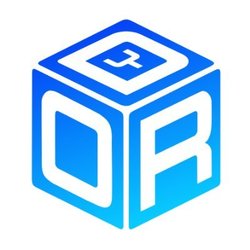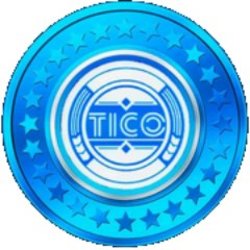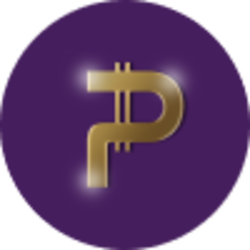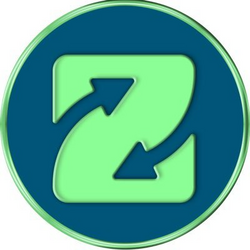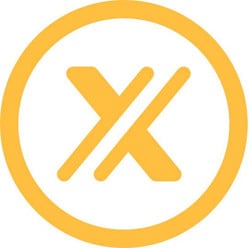Blockchain Technology is a revolutionary that can save data exchange and access for different parties.
This is a significant issue in the field of digital health, in which the security and privacy of medical information are crucial and where improving the quality of healthcare is not possible without greater coordination of managing patient information across healthcare systems and the capability for analytics that can be applied to population-level medical information.

Blockchain could improve digital health by making it simpler to share information securely and with patients’ consent across highly fragmented healthcare systems.
What is Blockchain Technology?
Blockchains are essentially the name of a database type that is shared between various computer network nodes. It’s used to store data electronically. Blockchain technology can be used to gather information into blocks. They make up a chain known as the blockchain.
This technology of keeping records has the highest security level, making it impossible to alter or hack information stored in the system. The information stored within the blocks could differ depending on the type of blockchain technology employed, as well as the particular industry that it is utilized.
The primary goal that blockchain technology serves is to save data securely without letting it become altered or deleted, hackable, or compromised.
How Can Blockchain Technology Change Healthcare?
Yes, it is. It can change how healthcare functions and eliminate fraud in the healthcare system. It also helps reduce costs for operations, improve how data is stored, and reduce duplicate tasks.
Another aspect that blockchain technology can aid in is enhancing transparency. This is possible because blockchain tech lets anyone validate the information and store it for the benefit of others.
Top 5 Use of Blockchain Technology in Healthcare
1. Electronic Health Records (EHR)
The optimal way to use Electronic Health Records is to keep a permanent medical record available to every member of the healthcare team, such as doctors, lab technicians, and other staff members, right at the time of service and on time.
Data on patients is kept across a variety of organizations throughout the lifespan of the patient with the current EHR deployments. The physician records a small portion of a patient’s medical file, for example, medication issues and diagnoses. They retain stewardship of these sections following the time the patient is treated.
The patient is the owner of their medical records in blockchain-based implementations, and physicians are granted access upon a need-to-know basis by using “smart agreements.”
One of the major issues facing EHRs is the correct administration of records, which includes correcting any incorrectly recorded data.
In addition to ensuring data integrity, different hospitals and providers face problems with interoperability, which can lead to poor, if not sharing, of data. Health records are splintered because of the lack of coordination in managing data and exchange.
Blockchains for healthcare offer a single, compact solution for all of these issues, making electronic health records easier to secure and more efficient.
Smart contracts automate and monitor changes in the system’s state, like viewership rights or the creation of new records. Blockchain records are encrypted to ensure the integrity of the data. The care team can include new information in the patient’s profile.
The patient can authorize which healthcare providers can access the data. This facilitates both provider and patient participation as well as aids in the creation of patient records. The blockchain design is founded on decentralization and cryptography concepts that could create more secure and interoperable EHR systems.
2. Clinical Research

Although there have been significant advancements in the transfer of medical information from paper records to digital ones, the healthcare industry is still struggling with issues related to the exchange of patient information between organizations and providers.
Patients can move to different locations or change their health insurance or healthcare provider to receive their care anytime during their life. Most of their comprehensive medical records are maintained in silos by every health care provider or hospital.
Furthermore, every medical institution would have stored the patient’s information using its specific storage format and data semantics. This causes obstacles in the area of sharing data.
These obstacles are partly due to what is in the information being shared (Protected Health Information) and to avoid blocking of data when data is transmitted.
This is important not just to treat patients in multiple organizations efficiently but also for clinical research, which requires actual medical records for conducting research and examining hypotheses in real-world situations with real-world data.
Patient data that is de-identified is needed to conduct clinical studies. Consolidating and de-identifying patient information requires significant time and effort and can cost lots of dollars.
The accessibility of massive collections of de-identified real-time raw data, as well as analyzable databases for further analysis and meta-analysis, is essential to achieve higher accuracy in clinical research as well as the outcomes of trials.
According to surveys, most consumers are willing to share their medical records to analyze and research if their privacy is protected.
Healthcare blockchains are crucial. There’s a high degree of transparency due to trust being integrated into Blockchain databases. Records can be accessed by all and aren’t held (stored) by anyone else, with encryption ensuring data security.
A shared ledger could encourage the sharing of information and community-driven clinical research by using public and private encryption.
Patients have complete control over their medical records, with the power to approve or deny access to healthcare organizations and providers. This platform would assist research institutions in getting direct and secure access to vast databases of extensive and accurate clinical information.
3. Blood Chain Tracking
The main issue facing monitoring blood donors, particularly in the developing world, is that there isn’t a uniform, low-cost and clear system currently in place.
It is possible to trace a blood donor from a blood donor where the blood sample was given, and the donor’s compliance data and location were evaluated with blockchain technology.
However, our company doesn’t stop there. It also makes other medical information, like the records of shots, available through the blockchain.
This differs from a healthcare blockchain-based ecosystem comprising blockchain-hosted medical records that are processed and analyzed using distributed AI.
This means that researchers can predict the impact of specific diseases with nearly perfect precision, and the government can confirm compliance with medical practices like blood donation.
4. Plasma Supply Chain
In this section, we’ll look at a few possibilities for how blockchain technology can be utilized in the plasma supply chain. We don’t intend to create a comprehensive description; we’re looking to develop ideas for further exploration and research.
It is easy to envision how blockchain can be used to improve the plasma supply chain, similar to how it’s applied to the supply chain for pharmaceuticals. The applications linked to the prevention of fabrication of plasma-related products and plasma logistics are obvious.
Blockchain could be used similarly to how MediLedger is employed to fight
counterfeit pharmaceuticals. A private blockchain hosted by nodes in the plasma supply chain representing supply chains is the primary component.
A unique identifier will be assigned to every plasma source, which will be saved on the blockchain along with the origin certificate. Every step is recorded on the blockchain along with other important information when the delivery is moved throughout the supply chain.
Supply chain participants can utilize their nodes to be connected with the blockchain and request information about the origin of delivery and personal donations while maintaining the highest level of security.
In this case, blockchains’ main function is to verify logistics transactions and create an immutable ledger to prevent attempts to alter data about the transaction’s origin or inject fake energy into the supply chain.
5. Verification of Medical Staff Credentials
It is crucial to confirm the details associated with the credentials of medical personnel for authentication reasons.
Their knowledge, qualifications of education, previous institutions, experiences as well as previous work experiences, and other relevant information should be confirmed, and, at the same time, it must be confirmed that the credentials aren’t compromised.
Blockchain technology will not only make hiring easier by providing actual data related to them but also offers high security to ensure that the information isn’t hacked.
For instance, the American-based Pro CredEx has introduced blockchain technology to verify that medical personnel. The system is built upon the R3 Corda Blockchain Protocol.
It could be for virtual healthcare delivery or greater transparency for sub-contracting organizations. Blockchains for healthcare have become an essential part of modern digital health.
Blockchain is a method of communication that offers a variety of future healthcare possibilities. Blockchain offers unprecedented possibilities for reducing processes’ complexity, enhancing trustful collaboration, and creating secure databases keeping patient information.
However, for blockchain to realize its full potential, government and public institutions must understand the blockchain ecosystem and develop a blockchain framework to coordinate early adopters.

























